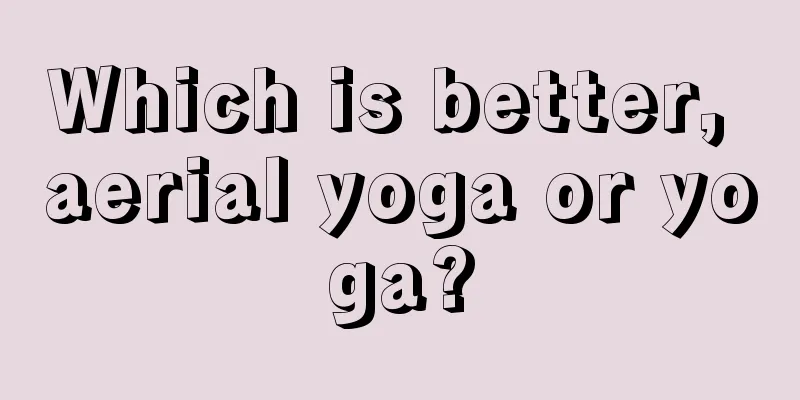Which is better, aerial yoga or yoga?

|
Most people know very little about yoga and only know the basics of yoga. But once you start to understand this sport, you will find that yoga covers a wide range of content. For example, yoga is divided into several types, including aerial yoga, low-altitude yoga, yin yoga, etc. Those who have the physical conditions can choose to do aerial yoga. The following introduces the difference between aerial yoga and ordinary yoga. The difference between aerial yoga and yoga: Aerial yoga movements and ground movements are not independent of each other, but with the assistance of aerial yoga, classic ground yoga poses can be completed more easily and effectively. Aerial yoga is suitable for beginners, and everyone learns from beginners, but it is best to have a professional coach. It is possible to practice aerial yoga even if you have no basic knowledge. The threshold for aerial yoga is not that high. Practice is a gradual process. Aerial yoga is divided into low altitude, medium altitude and high altitude. People with no basic knowledge can lay a solid foundation at low altitude and then gradually enter medium altitude and high altitude practices. Who is not suitable for aerial yoga? 1. People with osteoporosis Some yoga poses require you to use your hands or feet to support your body weight. If you suffer from osteoporosis, it is very likely that your core muscles are not well trained, which may cause fractures when you support your elbows. 2. Patients with spondylolisthesis When practicing the "Sun Salutation", the practitioner must bend the waist downward. People with spondylolisthesis may experience vertebral slippage again due to this movement. People with herniated disc may also suffer from more severe nerve compression in the lower limbs due to careless bending. 3. Epilepsy and cerebral cortex damage Many yoga movements involve stretching the neck. If you have epilepsy or damage to the cerebral cortex, bending forward and backward to massage the neck may induce an epileptic seizure. 4. Emotional fluctuations are not suitable Yoga is an exercise that requires the coordination of the body, mind and spirit. If you are angry, anxious or nervous, your muscle groups are tense and it is best not to practice yoga to avoid injury. Only when your muscles are soft can you practice yoga more healthily and safely. 5. People with high intraocular pressure It is not recommended to practice a headstand with your feet upside down. Yoga instructors say that forward bending or handstands will increase intraocular pressure, so people who already have high intraocular pressure are not suitable for practicing yoga. |
<<: What are some yoga moves to train your abs?
>>: How long after giving birth is it best to practice yoga?
Recommend
What is the heart rate for fat burning during exercise?
Exercise to lose weight has always been a favorit...
How to train explosive power in basketball?
Basketball can be said to be a ball sport that we...
The benefits of Taekwondo fitness
Taekwondo is a sport that everyone is very famili...
Which acupuncture points are good for weight loss?
Many people think that losing weight is a big pro...
Doing the whole set can make the thing grow a few centimeters
I am not tall and it is difficult for me to find ...
What are the most effective ways to train your abdominal muscles?
If we want to train good-looking abdominal muscle...
How to exercise the buttocks muscles
In our lives, many people hope to have an S-shape...
It is better to run a few kilometers every day
You can often see people jogging and exercising o...
How to exercise to grow muscles
If you want to build muscles, exercise is essenti...
How to prevent sports that hurt your knees?
Nowadays, people like to use exercise to maintain...
What are the benefits of skipping rope
Rope skipping is a very simple sport that can be ...
Is Taekwondo suitable for girls?
When it comes to learning Taekwondo, most people ...
The role of Latin dance aerobics
Latin dance is a relatively standardized dance. I...
There are two lumps of meat on both sides of the neck
We often find that some people have a lot of fat ...
What are the correct ways to lose weight by running?
Many people want to lose weight by running, but t...









